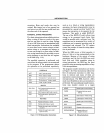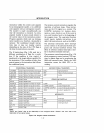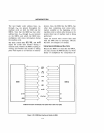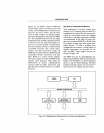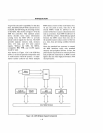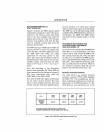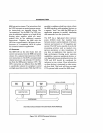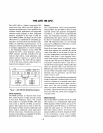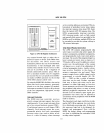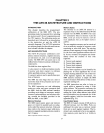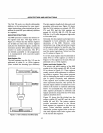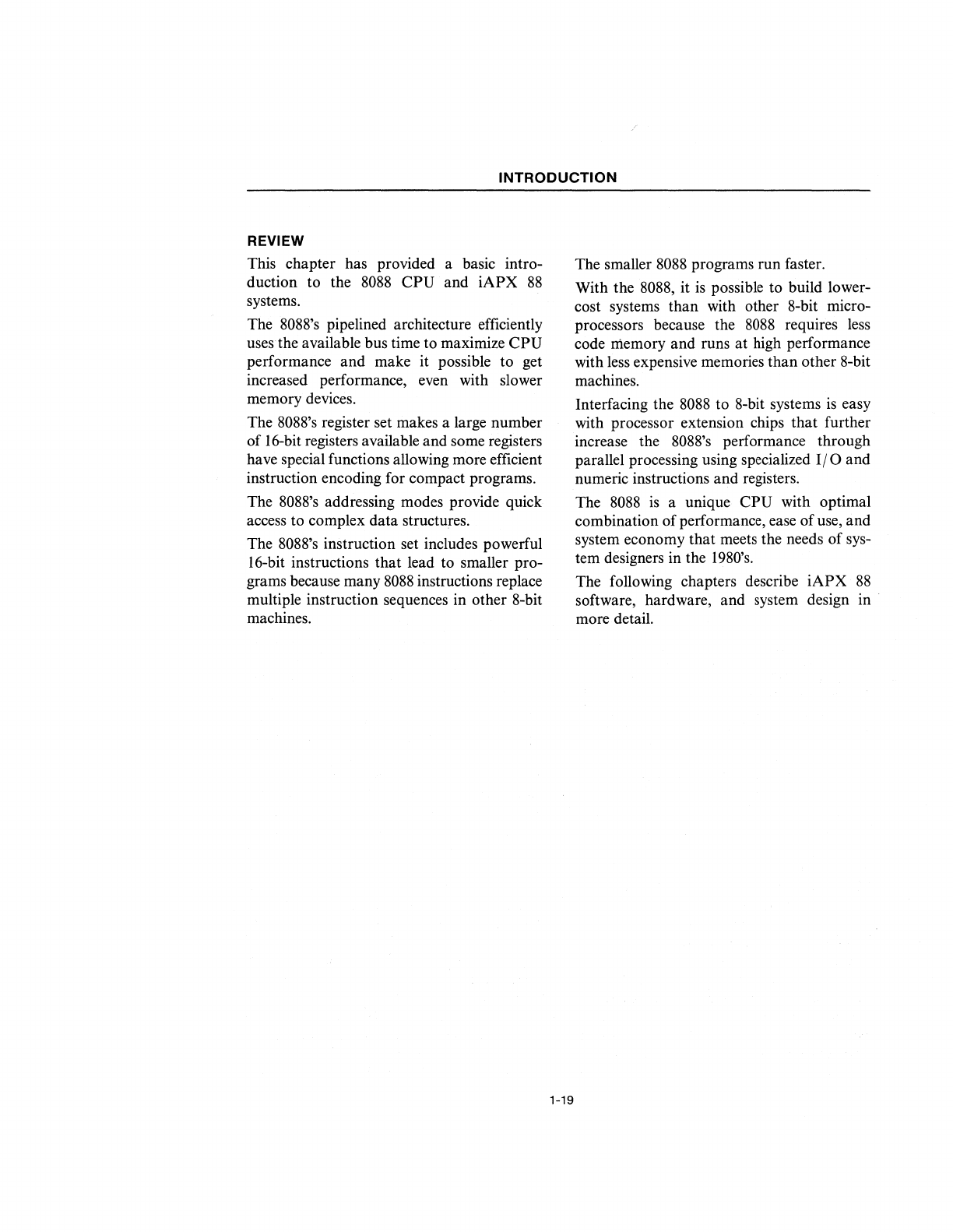
INTRODUCTION
REVIEW
This chapter has provided a basic intro-
duction to the
8088
CPU
and
iAPX
88
systems.
The 8088's pipelined architecture efficiently
uses the available bus time to maximize
CPU
performance and make it possible to get
increased performance, even with slower
memory devices.
The 8088's register set makes a large number
of 16-bit registers available and some registers
have special functions allowing more efficient
instruction encoding for compact programs.
The 8088's addressing modes provide quick
access to complex data structures.
The 8088's instruction set includes powerful
16-bit instructions that lead to smaller pro-
grams because many
8088
instructions replace
multiple instruction sequences in other 8-bit
machines.
1-19
The smaller
8088
programs run faster.
With the
8088, it
is
possible to build lower-
cost systems
than
with other 8-bit micro-
processors because the
8088
requires less
code memory and runs
at
high performance
with less expensive memories than other 8-bit
machines.
Interfacing the
8088 to 8-bit systems
is
easy
with processor extension chips that further
increase the 8088's performance through
parallel processing using specialized
110 and
numeric instructions and registers.
The
8088
is
a unique CPU with optimal
combination
of
performance, ease of use, and
system economy that meets the needs of sys-
tem designers in the 1980's.
The following chapters describe
iAPX
88
software, hardware, and system design in
more detail.



